
Animation is a method in which figures are manipulated to appear as moving images. In traditional animation, images are drawn or painted by hand on transparent celluloid sheets to be photographed and exhibited on film. Today, most animations are made with computer-generated imagery (CGI). Computer animation can be very detailed 3D animation, while 2D computer animation can be used for stylistic reasons, low bandwidth or faster real-time renderings. Other common animation methods apply a stop motion technique to two and three-dimensional objects like paper cutouts, puppets or clay figures.

Stop motion is an animated filmmaking technique in which objects are physically manipulated in small increments between individually photographed frames so that they will appear to exhibit independent motion or change when the series of frames is played back. Any kind of object can thus be animated, but puppets with movable joints or plasticine figures are most commonly used. Puppets, models or clay figures built around an armature are used in model animation. Stop motion with live actors is often referred to as pixilation. Stop motion of flat materials such as paper, fabrics or photographs is usually called cutout animation.
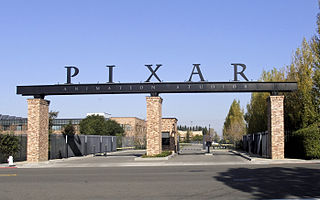
Pixar Animation Studios, commonly known as Pixar, is an American computer animation studio based in Emeryville, California, a subsidiary of The Walt Disney Studios owned by The Walt Disney Company. Pixar began in 1979 as part of the Lucasfilm computer division, known as the Graphics Group, before its spin-off as a corporation on February 3, 1986, with funding from Apple co-founder Steve Jobs, who became its majority shareholder. Disney purchased Pixar in 2006 at a valuation of $7.4 billion by converting each share of Pixar stock to 2.3 shares of Disney stock, a transaction that resulted in Jobs becoming Disney's largest single shareholder at the time. Pixar is best known for its feature films technologically powered by RenderMan, the company's own implementation of the industry-standard RenderMan Interface Specification image-rendering application programming interface. Luxo Jr., a desk lamp from the studio's 1986 short film of the same name, is the studio's mascot.
Modern animation of the United States from the late 1980s to late 1990s is referred to as the "renaissance age of American animation". During this period, many large American entertainment companies reformed and reinvigorated their animation departments following a general decline during the 1960s to 1980s. The United States has had a profound effect on animation worldwide. Since the 2000s traditional animation would lose interest against digital and Flash animation, naming this current period as the "millennium age of American animation".
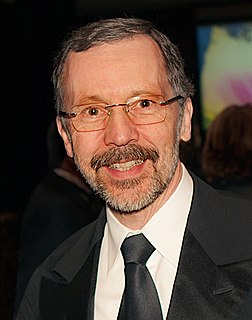
Edwin Earl "Ed" Catmull is an American computer scientist who was co-founder of Pixar and president of Walt Disney Animation Studios. He has been honored for his contributions to 3D computer graphics.

Traditional animation is an animation technique in which each frame is drawn by hand. The technique was the dominant form of animation in cinema until the advent of computer animation.

Donald Virgil Bluth is an American film director, animator, production designer, video game designer, and animation instructor, best known for his animated films, including The Secret of NIMH (1982), An American Tail (1986), The Land Before Time (1988), All Dogs Go to Heaven (1989), Anastasia (1997), and Titan A.E. (2000), for his involvement in the LaserDisc game Dragon's Lair (1983), and for competing with former employer Walt Disney Productions during the years leading up to the films that became the Disney Renaissance. He is the older brother of illustrator Toby Bluth.
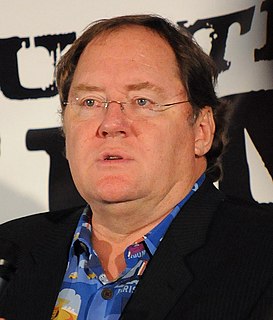
John Alan Lasseter is an American animator, film director, screenwriter, producer, voice actor and former chief creative officer of Walt Disney Animation Studios, Pixar and Disneytoon Studios. He was also the Principal Creative Advisor for Walt Disney Imagineering.

Walt Disney Animation Studios (WDAS), sometimes shortened to Disney Animation, is an American animation studio that creates animated features and short films for The Walt Disney Company. Founded on October 16, 1923 by brothers Walt Disney and Roy O. Disney, it is one of the oldest-running animation studios in the world. It is currently organized as a division of Walt Disney Studios and is headquartered at the Roy E. Disney Animation Building at the Walt Disney Studios lot in Burbank, California. Since its foundation, the studio has produced 58 feature films, from Snow White and the Seven Dwarfs (1937) to Frozen II (2019), and hundreds of short films.

Gary Wayne Goldman is an American film producer, director, animator, writer and voice actor, he is well known for working on films with Don Bluth such as All Dogs Go to Heaven for his directorial debut, Anastasia, An American Tail, and The Land Before Time. He was an animator at Disney before working at Sullivan Bluth Studios with Bluth.
Character animation is a specialized area of the animation process, which involves bringing animated characters to life. The role of a character animator is analogous to that of a film or stage actor and character animators are often said to be "actors with a pencil". Character animators breathe life in their characters, creating the illusion of thought, emotion and personality. Character animation is often distinguished from creature animation, which involves bringing photorealistic animals and creatures to life.

Fox Animation Studios was an American traditional 2D hand-drawn cel-animated/CGI production company located in Phoenix, Arizona, and was the former in-house feature animation division of 20th Century Fox. After six years of operation, the studio was shut down on June 26, 2000, ten days after the release of its final film, Titan A.E., and was replaced by Fox's Blue Sky Studios division.

The Small One is a 1978 American animated featurette produced by Walt Disney Productions and released theatrically by Buena Vista Distribution on December 16, 1978 with a re-issue of Pinocchio (1940). The story is based on a 1947 children's book of the same name by Charles Tazewell and was a project for the new generation of Disney animators including Don Bluth, Jerry Rees, Henry Selick, Gary Goldman, and John Pomeroy.
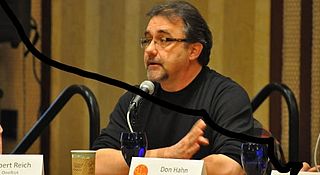
Donald Paul Hahn is an American film producer who is credited with producing some of the most successful animated films in recent history, including Disney’s Beauty and the Beast and The Lion King.
Sullivan Bluth Studios was an Irish-American animation studio established in 1979 by animator Don Bluth. Bluth and several colleagues, all of whom were former Disney animators, left Disney on September 13, 1979 to form Don Bluth Productions, later known as the Bluth Group. This studio produced the short film Banjo the Woodpile Cat, the feature film The Secret of NIMH, a brief animation sequence in the musical Xanadu, and the video games Dragon's Lair and Space Ace. The Bluth Group went bankrupt in 1984, and Bluth co-founded Sullivan Bluth Studios with American businessman Morris Sullivan in 1985.
John Foster Pomeroy is an American animator who has worked for several major studios, including Walt Disney Animation Studios and Sullivan Bluth Studios. He has also worked as producer, and screenwriter on several animated feature films.
Ralph Zondag is a storyboard artist and animation director.

Glago's Guest is a 2008 Walt Disney Animation Studios computer animated short film directed by Chris Williams. The film premiered at the Annecy International Animated Film Festival in June 2008.
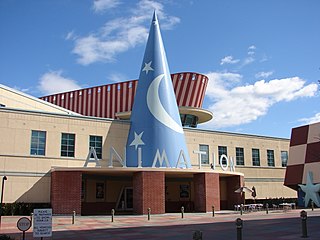
The Disney Renaissance is the period from 1989 to 1999 during which Walt Disney Feature Animation returned to producing critically and commercially successful animated films that were mostly based on well-known stories, much as the studio did during the era of Walt Disney during the 1930s to 1960s. The resurgence allowed Disney's animated films to become powerhouse successes at the domestic and foreign box office, earning much greater profit than most of the Disney films of previous eras.

Waking Sleeping Beauty is a 2009 American documentary film directed by Disney film producer Don Hahn and produced by Hahn and former Disney executive Peter Schneider. The film documents the history of Walt Disney Feature Animation from 1984 to 1994, covering the rise of a period referred to as the Disney Renaissance.














